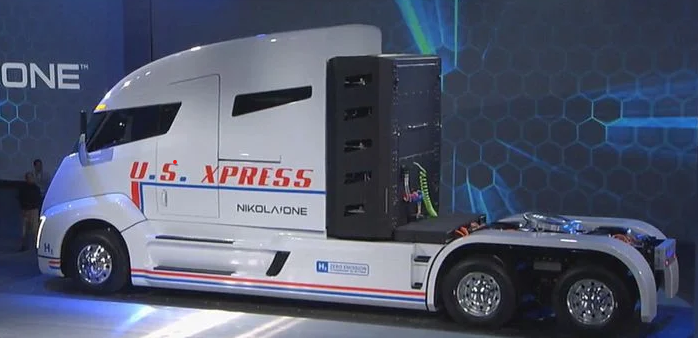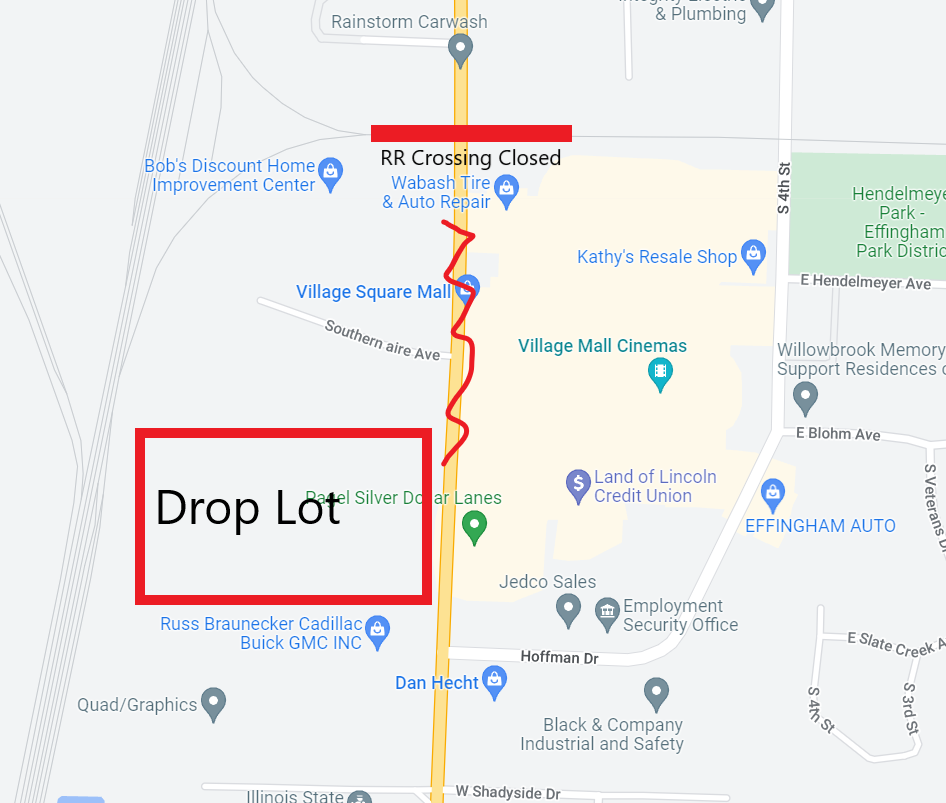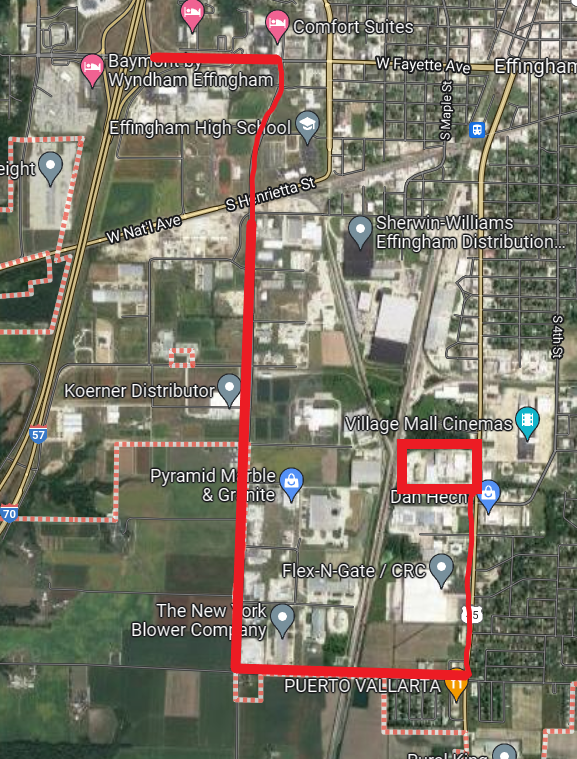For all you gearheads out there who seek out the latest and greatest in the auto industry, I’m sure you’ve caught the occasional glance of some shiny new concept cars. Even for those who don’t really care, the look of those aerodynamic, futuristic beauties is enough to draw anyone’s attention. I’ve seen these concept cars for years, but I’ve always wondered: why do I never see these cars on the road? The answer is probably the simplest: they aren’t practical and they don’t have any real-world applications. And in some cases, they just don’t work. This has been the case with Nikola Motors.
Nikola Motors was the brainchild of Trevor Milton, a sales and marketing major and college dropout. Before forming Nikola Motors, he had formed a string of failed businesses. The first of which, a security and alarm company that he founded in 2004, was sold to another company for around $300,000. The buying entity soon realized that the business they believed they purchased was not actually thriving. Contracts had fallen through and they learned that Milton had overpromised and under delivered. The company sold back to Milton at a loss, and he then sold to another company. His next attempt at a business, a website for posting used vehicles for sale, was also a failure, despite Milton’s exaggerations – or outright lies – about its success. This business was shuttered.
Milton began dabbling in the world of alternative-fuel vehicles by starting a company called dHybrid, Inc. He partnered with an engineer who had been working on compressed natural gas (CNG) technology. The pair claimed they could retrofit standard diesel engines with this technology to save on fuel costs. Milton’s skills as a salesman even garnered an investment from trucking company Swift to convert at least 800 trucks over a long-term period. Milton’s company delivered only five trucks to Swift, and they didn’t even work. Swift filed a lawsuit alleging dHybrid misrepresented the abilities of their technology and took investment money for personal use, among other things. All while this lawsuit was heating up, Milton was reaching out to other potential investors, lying about his technology, the contract terms of their deal with Swift, and EPA certifications that never existed.
With the lawsuit ongoing, Milton then formed another business with his father, one he called dHybrid Systems, LLC. By changing the name slightly, Milton was able to claim to prospective investors that he was just building upon the many successes of dHybrid, Inc., the successes that never actually happened. But that didn’t stop an investor from buying dHybrid Systems, LLC. And that buyer was Worthington Industries, a major steel manufacturing company who makes cylinders for pressurized gases and energy products. A steel container manufacturer and a compressed natural gas tech company; it would have been a perfect match, if the technology had worked. Insiders at dHybrid Systems would later claim that the systems they had built were always breaking. The repair techs had to run around and constantly make repairs to try to maintain the front that the systems worked so the deal with Worthington would go through. And what was the purchase price for this polished turd? Close to $16 million. And with that, Trevor Milton took the money and ran to his basement to work out his next scheme.
Apparently bummed that the name “Tesla” was already taken, and running low on ideas for other electricity-related inventors, Milton settled on “Nikola” for his next project, his most ambitious yet. Ditching the CNG “technology” of dHybrid Systems, one that he claimed was proprietary and had been engineered in-house by his partner, he settled on a new grift: Hydrogen fuel cell (HFCV) technology.
While electric and Hydrogen-powered vehicles are similar in that they lack the emissions of combustion-engine vehicles, their power sources are distinct and as such, they have different pros and cons. Both use regenerative braking, the process of harnessing the heat from engine braking and turning that into electricity. Electric vehicles have been gaining traction in terms of availability and popularity. The infrastructure may still be fairly new, but it is growing. Charging stations are becoming easier to find and the charging costs are currently cheaper than gas and hydrogen. However, if the nationwide infrastructure to accommodate Hydrogen fuel is expanded, it has the advantage over EV stations. Hydrogen is the most abundant element in the world, which makes it plentiful and cheap. While Hydrogen fueling is currently not the cheapest option, with technology improvements, it has the potential to be a very cost-effective option. It also provides for greater fuel efficiency and enhanced driving range, making it more suitable for trucking-industry applications. Instead of the huge battery that an EV uses, a HFCV uses a stack of fuel cells that run on hydrogen which combines with oxygen to produce electricity and water vapor, completely pollution free. HFC vehicles still use an electric motor to supply power to the wheels and driving applications, but the transfer of power is different from that of electric vehicles. Fuel time for a Hydrogen station is very quick, from 10-20 minutes based on the vehicle size. That’s on par with diesel refueling times and much quicker than the estimated refueling times of EV trucks, at approximately 1.5 hours. With all these advantages, one can see why a HFC hauler would be quite the boon for the trucking industry. Trevor Milton felt the same way, and he was going to sell it, whether it worked or not.
In 2016, the Nikola One, the futuristic, revolutionary truck powered by a combination of Hydrogen fuel cells, a Lithium battery, and regenerative braking was unveiled at a trade show. It was glorious, and “fully functioning,” Trevor says, multiple times during the show. With Nikola being formed in 2015 and having a fully-functioning truck the next year, how did he do it? Well, buckle up..

The unveiling show was impressive, and several deep-pocketed investors thought so. Nikola Motors had acquired some big-name investors and garnered $4 billion in pre-orders, Milton said. Some large companies did actually invest/partner with Nikola, but not in the numbers Milton claimed. Trucking companies Ryder and US Xpress both partnered with Nikola to buy/service Nikola One trucks. This gave them the capital they needed to continue to build, innovate, and deliver on their huge promises. Nikola also inked deals with Bosch, ZapGo Ltd., and Swedish company Powercell AB to supply fuel cells and batteries. And Milton claimed that they had their own proprietary, in-house technology and that they were poised to get the smartest people in the industry to create it. Every component and technology to create these trucks was going to be completely revolutionary: smarter, faster, stronger, cheaper. To do that, Milton put together a crack team of experts, highly skilled in their related technological fields, like…his brother.
In order to produce Hydrogen at a price that Milton claims is approximately 81 percent lower than the rest of the Hydrogen-producing world, they need a brilliant mind: enter Travis Milton. He is listed as Nikola’s Director of Hydrogen Production and Infrastructure. Trevor Milton’s brother is pegged as the mastermind behind the innovative technology that is to set Nikola apart from other truck manufacturers, with qualifications that include pouring driveways and doing basic handyman and minor contracting work. Yes, you read that correctly. Granted, he did pour a beautiful driveway in Maui when he worked there for a spell. But it’s unclear what he can bring to the table in terms of ground-breaking technology to revolutionize the zero-emissions trucking industry. And Trevor has a lot to accomplish very quickly with all his promises and all that investment money. But don’t worry; Milton has a few other aces up his sleeve.
To aid Travis in Hydrogen infrastructure development to create a network of countrywide Hydrogen refueling stations, Milton has designated Dale Prows as the Head of Infrastructure Development at Nikola. To earn this illustrious title, Prows had experience managing and developing a golf course. Moving on, we have Kevin Lynk, listed as Nikola’s Chief Engineer. His duties include developing axles, rotors, gears, and invertors for the trucks. And he’ll do all this with his past experience. Before joining Nikola, he worked with computer designing software like CAD, and his field work included fixing pinball machines.
Milton makes numerous claims that all components are developed in house. It turns out, that’s all poppycock. And after reviewing his clearly unqualified team, it’s obvious why. These executives have literally no knowledge or experience in anything they had been hired to do. So how exactly did Milton expect to produce all the technology he claimed to be producing? The answer is, he didn’t.
All that “proprietary” technology that Milton hyped wasn’t actually developed in house, nor was it proprietary. The inverters were purchased from a company called Cascadia. They weren’t specially built for his applications; they were just standard off-the-shelf product. Milton simply put a black sticker over the manufacturer name; all fixed. Before the name “Nikola” was adopted, Milton had briefly run the company under the name Bluegentech, LLC. Running under that name, they had entered in a contract with EVDrive. The driving factor in working with Milton was their claim of having a “proprietary turbine system.” However, just months after signing the contract, Milton was working to secure turbines from another company. After the reveal of the Nikola One, more and more evidence began to emerge indicating just how “incomplete” the truck really was.
Intracompany emails from Nikola reveal just how unprepared they were to reveal their “fully-functioning” truck to the world. These emails show a push to get the truck looking as functional as possible, by making sure the exposed wires looked ok and that the interior electronics functioned properly. Nikola had added decals to the truck showing “H2,” and “Zero Emission Hydrogen Electric,” despite the truck not having those capabilities. Further inspection and pictures from the reveal showed a power cord running up from the floor to power the truck, since it didn’t actually have any power of its own. But the show had served its purpose; it attracted investors.
Unbeknownst to partner companies and investors, the production of the Nikola One was stopped just after the show, but that didn’t stop them from continuing the fraud. In 2018, they posted a video of the truck in motion. In reality, they had towed the truck to a low-grade hill and just let it coast. They had it up to 56 mph just rolling down the hill.
In 2019, Nikola claimed to have created the most advanced battery so far developed. Milton hyped this on twitter, claiming it would double the capacity of the standard vehicle battery. But, as usual, it was a lie. Nikola was trying to acquire a battery technology company. Per the usual method of operation, Nikola made huge announcements about technology that didn’t exist and then rushed to try to substantiate those claims by purchasing or partnering with companies who actually had created similar technology. Not only was the Nikola One scrapped, but so was the Nikola Two, a day-cab version of the One. They also created a prototype for an off-road vehicle, which was also scrapped. None of these vehicles actually worked. They were basically just life-sized models; all style, no substance. You may wonder, why was the company creating all these vehicles that they knew wouldn’t work? Well, they had to keep up appearances that they were working on something, since they had already taken so much money from investors. Plus, the hype itself generates wealth. That’s what the stock market is for.
Nikola went public in 2020. This opened them up to make billions off speculation and hype. Milton was worth about $3 billion in stock after they went public. Of course, going public also opens up the company to investigation and criticism. Hindenburg Research, an investment research firm and short-seller, began sounding the alarms about Milton and Nikola. All the information they collected led to further scrutiny of Milton and his business dealing, and especially the claims that led to those contracts, investments, and acquisitions. Former employees of Nikola also began to speak about the illegitimate dealings within the company, including the former CFO who sued the company. Once the lawsuit was filed and news spread about it, Nikola announced that it was refunding all the deposits for Nikola One preorders. The largest preorders included companies US Xpress, Anheuser Busch, and Republic Services trash company. However, it was determined that their books were bunk, complete fabrications. Milton also claimed to own natural gas wells, which was also a complete lie. Trevor Milton is proving to be a fraud the likes of Enron, Theranos, and Bernie Madoff. But his lies are starting to catch up with him.
The research that Hindenburg made public that illustrated years of Milton’s deceptive dealings caused Nikola’s stock to plummet. Milton also saw the writing on the wall and resigned from Nikola. It also caught the attention of the US Attorney’s office in New York. They began an investigation into Milton, and subsequently charged him with securities fraud, alleging that he had, among other things, lied to investors about Nikola’s technology and progress. Milton didn’t do himself any favors, leaving a trail of incriminating emails, texts, and very public false claims on Twitter and Youtube. His defense attorneys didn’t have much to work with; they basically explained away his lies as the statements of an overenthusiastic, young entrepreneur, excited about the potential of his company. The jury didn’t buy it. They saw Milton for what he is; a con man who had lied to investors and the public to get their money. In October 2022, Milton was convicted of one count of securities fraud and two counts of wire fraud. These convictions carry up to 20-25 years in maximum sentences. His sentencing date is yet to be set.
Is there a future for Nikola Motors? It’s hard to say. As of 2022, the company, minus Milton, claimed the Nikola Tre, a new battery-electric semi truck is currently in production. It is not intended for long-haul as they claim it has an approximate 350-mile range. Of course, it’s hard to say if these trucks will ever come to fruition. I guess we’ll find out when (if) the rubber meets the road.
Sources:

